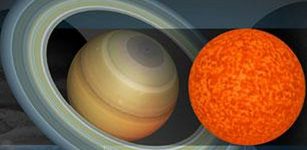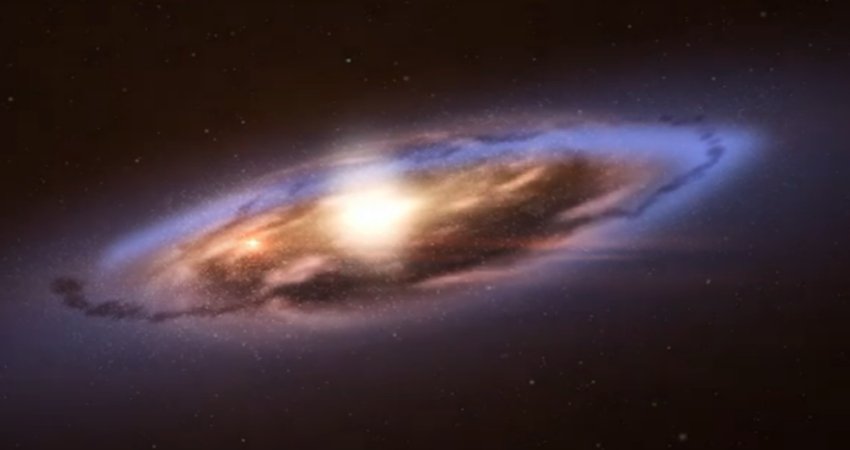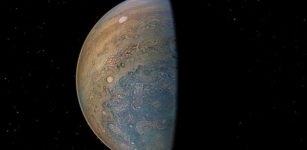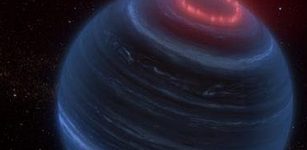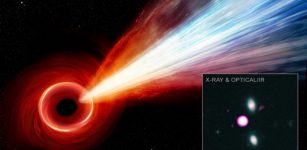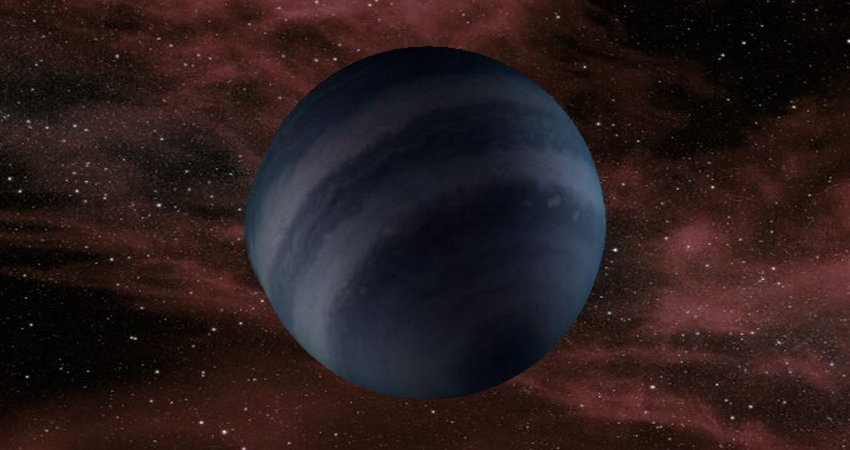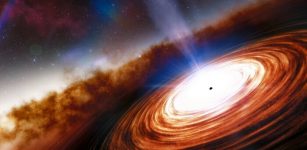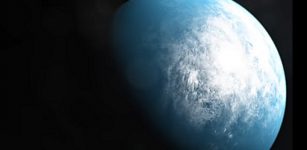30-Year-Old Data Delivered By Voyager 2 Reveals One More Uranus’ Secret
Eddie Gonzales Jr. – MessageToEagle.com – Using a 30-year-old data collected by NASA’s Voyager2, scientists still learn much about planets, our spacecraft passed by in our solar system.
Now, they have discovered one more secret about the mysterious seventh planet, the icy-cold planet Uranus.
 Planet Uranus. Image credit: NASA
Planet Uranus. Image credit: NASA
A new study of data has shown that 34 years ago Voyager 2 flew through a plasmoid, a giant wobbly magnetic bubble that may have been whisking Uranus’s atmosphere out to space.
Planetary atmospheres all over the solar system are leaking into space. Hydrogen springs from Venus to join the solar wind, the continuous stream of particles escaping the Sun. Jupiter and Saturn eject globs of their electrically-charged air, too.
“Mars used to be a wet planet with a thick atmosphere,” said Gina DiBraccio, a space physicist at NASA’s Goddard Space Flight Center and project scientist for the Mars Atmosphere and Volatile Evolution, or MAVEN mission. “It evolved over time”—4 billion years of leakage to space—”to become the dry planet we see today.”
Atmospheric escape is driven by a planet’s magnetic field, which can both help and hinder the process.
Scientists believe magnetic fields can protect a planet, fending off the atmosphere-stripping blasts of the solar wind. But they can also create opportunities for an escape like the giant globs cut loose from Saturn and Jupiter when magnetic field lines become tangled. Either way, to understand how atmospheres change, scientists pay close attention to magnetism.
That’s one more reason Uranus is such a mystery. Voyager 2’s 1986 flyby revealed just how magnetically weird the planet is. Unlike any other planet in our solar system, Uranus spins almost perfectly on its side—like a pig on a spit roast—completing a barrel roll once every 17 hours.
Its magnetic field axis points 60 degrees away from that spin axis, so as the planet spins, its magnetosphere—the space carved out by its magnetic field—wobbles like a poorly thrown football. Scientists still don’t know how to model it.
So they downloaded Voyager 2’s magnetometer readings, which monitored the strength and direction of the magnetic fields near Uranus as the spacecraft flew by. They zoomed in closer than previous studies, plotting a new datapoint every 1.92 seconds. Smooth lines gave way to jagged spikes and dips. And that’s when they saw it: a tiny zigzag with a big story.
“Do you think that could be … a plasmoid?” Gershman asked DiBraccio, catching sight of the squiggle.
Little known at the time of Voyager 2’s flyby, plasmoids have since become recognized as an important way planets lose mass. These giant bubbles of plasma, or electrified gas, pinch off from the end of a planet’s magnetotail—the part of its magnetic field blown back by the Sun like a windsock.
With enough time, escaping plasmoids can drain the ions from a planet’s atmosphere, fundamentally changing its composition. They had been observed at Earth and other planets, but no one had detected plasmoids at Uranus—yet.
The plasmoid DiBraccio and Gershman found occupied a mere 60 seconds of Voyager 2’s 45-hour-long flight by Uranus. It appeared as a quick up-down blip in the magnetometer data. “But if you plotted it in 3-D, it would look like a cylinder,” Gershman said.
They compared results to plasmoids observed at Jupiter, Saturn, and Mercury, and estimated a cylindrical shape at least 127,000 miles (204,000 kilometers) long, and up to roughly 250,000 miles (400,000 kilometers) across.
Like all planetary plasmoids, it was full of charged particles—mostly ionized hydrogen, the authors believe.
Readings from inside the plasmoid—as Voyager 2 flew through it—hinted at its origins. Whereas some plasmoids have a twisted internal magnetic field, DiBraccio and Gershman observed smooth, closed magnetic loops. Such loop-like plasmoids are typically formed as a spinning planet flings bits of its atmosphere to space.
“Centrifugal forces take over, and the plasmoid pinches off,” Gershman said. According to their estimates, plasmoids like that one could account for between 15 and 55% of atmospheric mass loss at Uranus, a greater proportion than either Jupiter or Saturn. It may well be the dominant way Uranus sheds its atmosphere to space.
How has plasmoid escape changed Uranus over time? With only one set of observations, it’s hard to say.
“Imagine if one spacecraft just flew through this room and tried to characterize the entire Earth,” DiBraccio said. “Obviously it’s not going to show you anything about what the Sahara or Antarctica is like.”
But the findings help focus new questions about the planet. The remaining mystery is part of the draw. “It’s why I love planetary science,” DiBraccio said. “You’re always going somewhere you don’t really know.”
Written by Eddie Gonzales Jr. – MessageToEagle.com Staff

